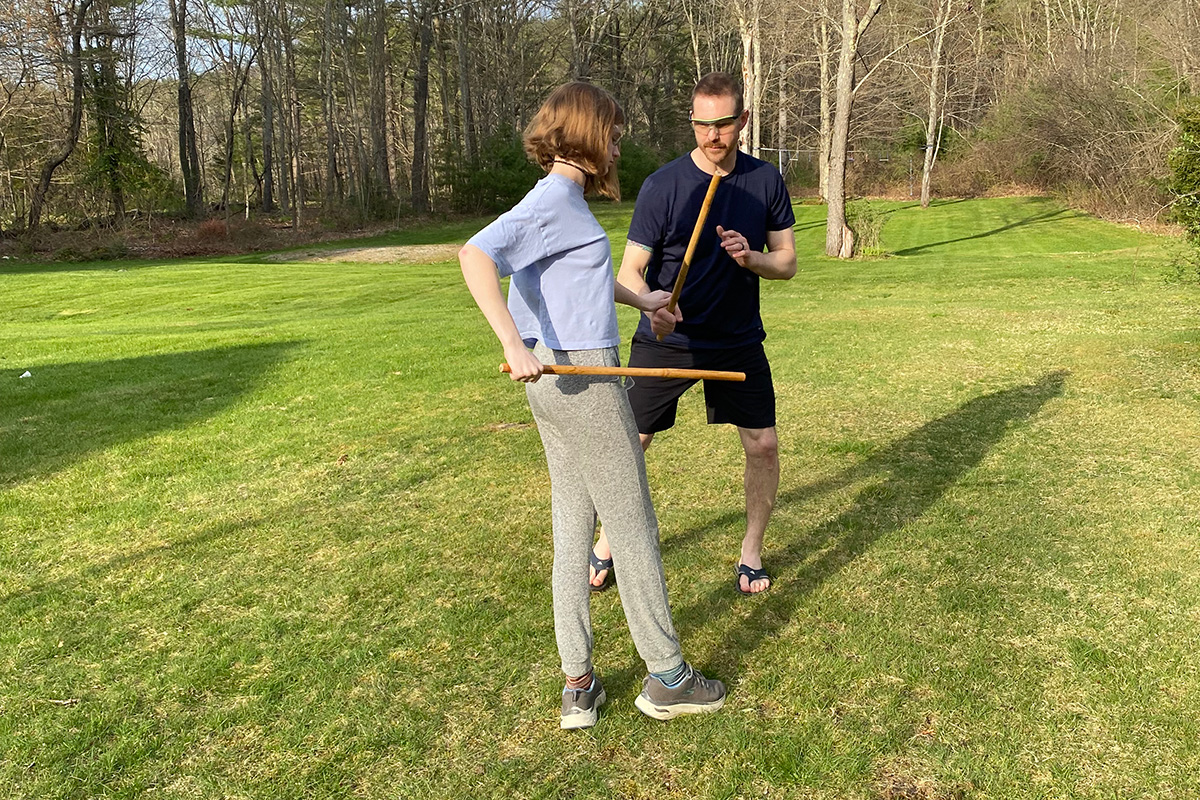
Arnis de Mano is a Filipino martial art using weapons for self defense. The word arnis is an archaic Spanish word for harness, which was used to describe armor. De mano means “of the hands”, so the name suggests you can be so good at defending yourself with your hands that it is like armor. Again, this is archaic, so fighting was always done with weapons.
The Philippine islands have been an area of conflict for centuries. Occupied at various times by the Spanish, United States, and Japan, the diverse people of the Philippines have developed an astonishing array of diverse weapons and fighting arts. Although the arts differ, there are often commonalities among arts.
Our particular branch is descended from Remy Presas, by way of Randy Gelo. Remy Presas was a legend of Filipino martial arts who emigrated to the United States in the mid 1970s. Teaching widely across the country and the world, few people had the impact on the arts in the United States as he did. Randy Gelo met Remy in 1994, and was a direct student for 7 years. Remy taught primarily by seminar, so Randy would see him periodically, then return to his own school and train what he’d learned with his students.
An already senior martial arts practitioner, Dr Baroody began training Arnis with Randy in 2017, and achieved his black belt in Arnis in 2019. Dr Baroody had taught his children karate for several years, but during the Covid lockdown he switched to teaching them arnis. Exploring what would help them learn the art taught him a great deal about arnis, and enabled him to create a curriculum to learn the art quickly.
Arnis goes back to a time of training for war. A martial art that takes many years to learn is not suitable for war, as you rarely have the luxury of time when threatened.The basics of arnis can be learned in a matter of months, and the system is constructed so that most aspects return to the basics again and again. Interestingly enough, the art can also be learned to a certain level of proficiency without being able to consciously explain what you can do. It’s designed to teach you to fight, fast. This requires integrating it at a subconscious level, and the curriculum does so very quickly.
Regardless of origins, our practice of arnis is rooted in legal self defense for today. Understanding how to avoid or minimize conflict is prioritized in order to keep our students safe physically, legally, and ethically in the area of self-defense. While real violence often occurs with weapons, citizens often find themselves in non-permissive environments. Our techniques and tactics are rooted in this reality, to help the student not just survive, but thrive in their lives.

